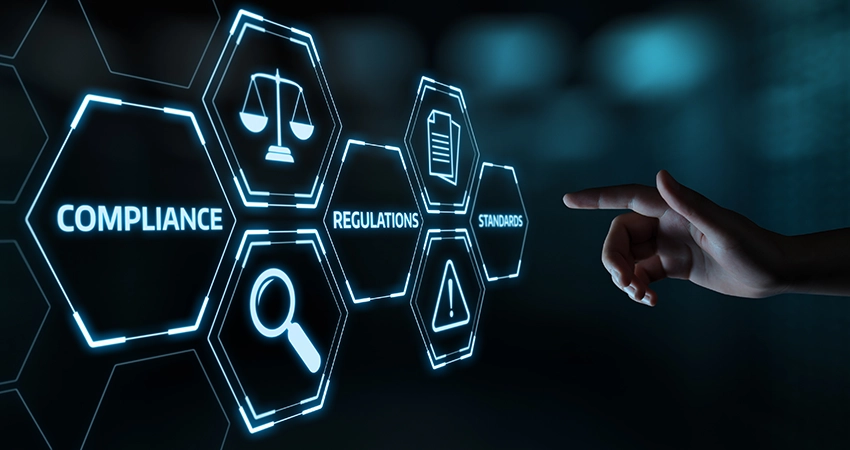What are Carbon Offsets? Can they Help with Your ESG Strategy?
- ESGRC
- 10 November 22

Introduction
Evidence of the climate crisis is all around us in the form of record-breaking heat waves, floods, wildfires, and drought. To combat this global challenge, our first and foremost priority must be to directly reduce emissions across our businesses and supply chains – be it through the use of renewable energy, better waste management practices, or simply, less travel.
Beyond that, there’s another strategy that many companies are using to get to net zero faster – buying carbon offsets.
What are Carbon Offsets?
Carbon offsets are essentially a way for businesses to compensate for their carbon footprint by investing in emission-reducing projects elsewhere. For example, a company might finance a wind farm in a developing country to replace coal-fired power plants. Or, fund a waste-to-energy project that captures and converts methane from landfills into electricity for local communities.
There are broadly two types of offset schemes:
- Removal offsets are generated from activities that remove carbon from the atmosphere (e.g., restoring a damaged mangrove ecosystem)
- Avoidance offsets are from activities that prevent the release of emissions into the atmosphere (e.g., replacing wood or charcoal stoves with energy-efficient alternatives).
Why are companies making a beeline for offsets? Because while the end goal is to eventually eliminate all emissions, that can be harder to achieve for some businesses - especially, those that sell commodities like oil and gas, or whose production depends on fossil fuels. While they wait for new zero-emissions infrastructure to be built, many are accelerating their progress toward carbon neutrality by purchasing carbon offsets.
The Compliance Perspective: How Carbon Offsets Help Companies Meet Emission Reduction Requirements
Offsets aren’t just bought voluntarily. They’re also used to meet compliance requirements around emissions thresholds.
For example, under the Kyoto Protocol’s Clean Development Mechanism (CDM), companies can earn a carbon credit for every tonne of CO2 they reduce through decarbonization projects, usually in developing countries. These credits can then be exchanged for carbon allowances – or, sold to meet legally binding emission reduction targets.
COP26’s Article 6 also provides a mechanism to trade carbon credits – but it takes things further with more stringent rules around additionality, permanence, and double counting (more on that in the next section). These measures are poised to improve the transparency of carbon markets, and result in higher-quality credits.
The other way to ‘offset’ excess emissions is through ‘cap and trade’ schemes which allow companies to purchase carbon allowances - certificates or permits that represent the legal right to emit one tonne (metric ton) of CO2 or equivalent greenhouse gas (GHG).
For example, under the EU Emissions Trading System (EU ETS) – which is part of EU climate legislation – companies can buy and trade emission allowances within a certain cap which keeps reducing every year.
Other ‘cap-and-trade’ schemes include the US’s Regional Greenhouse Gas Initiative (RGGI) and the UK Emissions Trading Scheme (UKETS).
What to Consider When Buying a Carbon Offset
Here are four principles to keep in mind when investing in a project to offset your carbon footprint:
- Additionality: Will the project lead to a reduction in emissions that would not have happened otherwise? For example, if a reforestation initiative would have been funded by the local government regardless of other contributions, then your investment is additional and doesn’t really count as a carbon offset.
- Permanence: Will the project permanently lower GHG emissions? For example, you might invest in a reforestation initiative – but if a wildfire burns down the forest, the carbon stored in it will be released back into the atmosphere, thereby negating your efforts.
- Double counting: Is another company claiming the same emissions reduction as you? This isn’t allowed.
- Leakage: Will a reduction of GHG emissions in your project location simply shift the source of those emissions to another place? For example, your offset project might focus on preventing deforestation in one site – but it’s entirely possible that the people who want to clear the land will simply move their operations to the adjoining forest.
- Verifiability: Is your project data being verified by an objective third party? This helps confirm that the emissions reductions are authentic, credible, and compliant with reporting standards.
Why a Connected ESG Strategy is Important in Enabling Growth with Purpose
Before buying a carbon offset, the first step is to understand what percentage of your carbon footprint remains to be addressed after you’ve exhausted all other feasible emission-reducing opportunities. Only then can you know how much to offset in a cost-efficient manner.
That’s where a connected ESGRC (environmental, social, governance, risk, and compliance) program can help. It brings together all your environmental metrics, ESG-related risks, supplier assessment results, and more into a single source of truth.
With software like MetricStream ESGRC, you can streamline, automate, and centrally manage ESG disclosure requirements. Our technology makes it simple to assess, understand, and disclose your carbon footprint in compliance with ESG standards and frameworks. It also provides a unified view of the risks and impact of all your emission-reducing initiatives – including carbon offsets. With these insights, you can make better decisions that drive sustainable growth, and win the trust of both investors and stakeholders.
Carbon offsets aren’t a silver bullet, for the simple reason that carbon offsets don’t work on their own. Companies have mostly used offsets as a way to easily achieve carbon neutrality. If your business is looking to build long-term strategic plans to not just ensure ESG compliance but to also make a conscientious effort to save the planet, taking a connected ESGRC approach will help grow your business with purpose.








